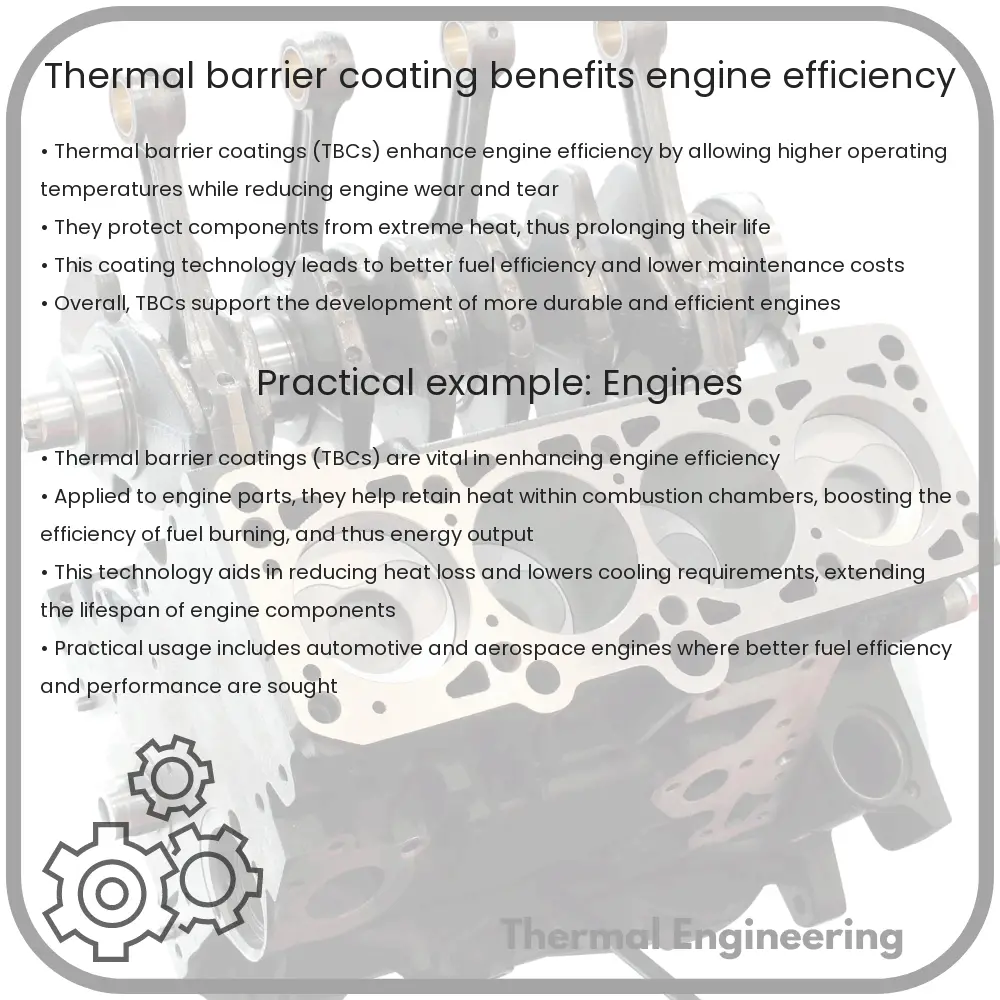Learn about Thermal Barrier Coatings (TBCs), advanced materials used to insulate components in high-temperature environments and enhance engine efficiency.

Introduction to Thermal Barrier Coatings
Thermal Barrier Coatings (TBCs) are advanced materials usually applied to the metallic surfaces of components exposed to high temperatures, such as gas turbine or aero-engine parts. The primary function of these coatings is to provide insulation from high temperatures while maintaining component integrity.
Composition and Application of TBCs
TBCs typically comprise a ceramic material such as yttria-stabilized zirconia (YSZ). This material is favored for its low thermal conductivity and stability at high temperatures. The application of TBCs involves a layered structure, generally including a bond coat layer which helps in adhering the ceramic layer to the substrate and also offers protection against oxidation and corrosion.
Benefits of Thermal Barrier Coatings
- Increased Efficiency: By reducing the temperatures of underlying metal components, TBCs allow engines to operate at higher temperatures, thereby improving the efficiency of the system through enhanced thermodynamic cycles.
- Extended Component Life: TBCs protect components from heat-induced degradation and corrosion, which extends the lifespan of these high-cost parts.
- Reduced Cooling Requirements: With the implementation of TBCs, the need for additional cooling of engine components is reduced, which further boosts the engine’s performance and efficiency.
Impact on Engine Efficiency
One of the most significant benefits of using thermal barrier coatings is the enhancement of engine efficiency. In thermodynamic terms, the efficiency of an engine, η, is defined by the formula:
η = 1 – (Tout / Tin)
In this equation, Tin represents the temperature at which heat is added (operational temperature of the engine), and Tout is the exhaust temperature. By applying TBCs, the Tin can be increased without corresponding increases in Tout, thus improving the overall efficiency of the engine.
Advancements and Future Prospects
Research in the field of TBCs continues to focus on finding new materials and processes that offer greater thermal insulation, durability, and reliability under extreme conditions. Innovations such as the development of multilayered TBCs and the exploration of new ceramic materials are paving the way for more resilient and efficient thermal barrier systems. As these technologies evolve, the potential applications extend beyond aerospace into automotive, industrial, and power generation sectors.
Conclusion
Thermal Barrier Coatings represent a critical development in the field of materials engineering, providing significant benefits in terms of operational efficiency and durability in high-temperature environments. As research progresses, the scope and efficacy of these coatings are expected to improve, further enhancing their usability in various engineering domains.